Using compound interest to grow from 300 USDT to 100,000 USDT: How I did it in 3 months (with real strategies)
The cryptocurrency world is never short of stories of overnight riches, but most people are just bystanders.
Today, I want to share a real and feasible path—how to grow 300 USDT into 100,000 USDT within 3 months. This isn't theory, but a method I've personally verified. I encountered pitfalls and even suffered account blowouts along the way, but ultimately found a high-win-rate strategy.
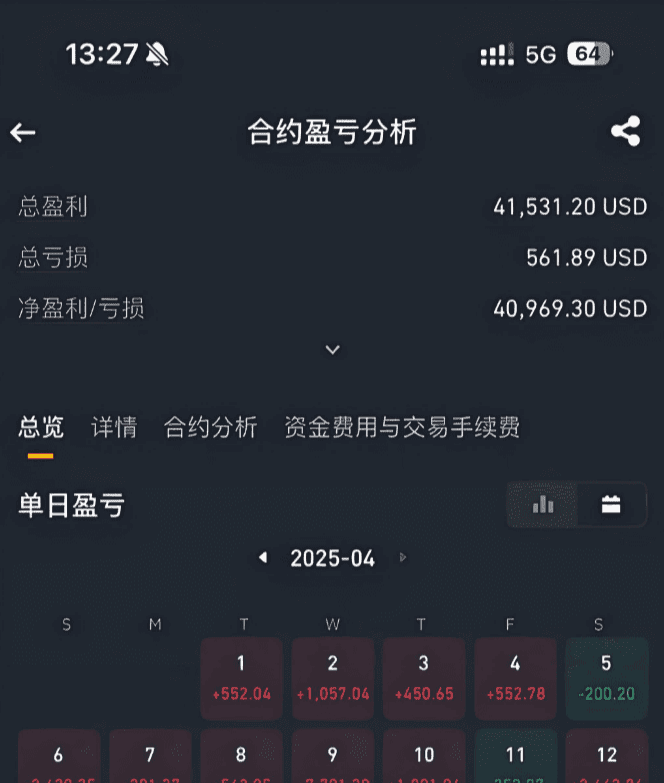
Step 1: Fund Allocation (to avoid losing all funds at once)
300 USDT may not seem like much, but if you bet everything on a single coin, there's a 99% chance it will go to zero. My strategy is:
150U (50%): For trend trading + (BTC/ETH mainstream market data)
100U (30%): Investing in low-market-cap potential coins (screening based on key indicators)
50U (20%): Short-term contract trading* (high volatility market)
Step Two: Trend Trading – Capturing the Main Upward Wave
In January 2024, I observed that BTC was consolidating around 38,000, and on-chain data showed whales accumulating. Therefore, I bought near 38,500.
I bought in batches and took profits at 42,000 and 45,000 respectively. This single transaction turned 1,500 USDT into 2,800 USDT.
How do I determine trends? I mainly look at three indicators (one of which is on-chain data, and the other two are... @Bithuang)
Step 3: Accumulate low-market-cap coins + (key to 10x or more)
MEME coin, new public chains, RWA projects... low-market-cap coins have extremely high explosive potential, but 99% of them are garbage. I used three screening criteria to find truly promising projects.
In March of this year, I used this method to make a 25-fold return on a certain animal-themed cryptocurrency in 5 days (call me for the specific cryptocurrency and purchase timing).
Step 4: Short-term contract trading (high risk, high reward)
Short-term contracts are an accelerator, but also a "meat grinder." My strategy is:
Only place orders at key support/resistance levels (avoid frequent trading).
Strict stop-loss (no more than 3% of principal).
Using funding rates plus arbitrage (a hidden strategy employed by a certain exchange)
Final step: Compound interest growth (the key to going from 10,000 USD to 100,000 USD)
Once my capital exceeded 10,000 USDT, I began using a "pyramid averaging down" strategy* to maximize profits when major market movements occurred. Simultaneously, I started cross-exchange arbitrage to profit steadily from price differences.

How to improve win rate and minimize risk in cryptocurrency contract trading?
If you're determined to spend your whole life in the crypto world and hope to one day be able to support your family through cryptocurrency trading!
So please keep these 10 ironclad rules in mind. They are short but full of valuable information. I'm sharing them with those who are destined to hear them!
Cryptocurrency trading is never a path to success that comes easily. Every cryptocurrency trader, from the moment they enter the market, experiences countless setbacks. Some are defeated, while others rise again. The difference lies in whether they can transform the hardships they endure into opportunities for personal growth. Everyone experiences these setbacks, but not everyone is adept at reflecting on and learning from them.
Yi Yan's cryptocurrency trading journey has been full of ups and downs, and looking back now, he has many feelings. Today, he has specially sorted out the essence of it and shared it, hoping to help other cryptocurrency investors avoid detours.
First and foremost, protect your principal. If you lose all your principal, there's no chance of recovery. It's better to earn less than to lose your principal; always leave yourself some room for maneuver.
Second: Don't trade too frequently. It's enough to make a few big moves in a year. Greed will lead to big losses!
Third: Control your emotions: 99% of people lose to human nature. Fear and greed are the biggest enemies: the more the market rises, the more people want to buy; the more it falls, the more people want to sell. But true masters do the opposite.
Fourth: In a bull market, be bold enough to make money; in a bear market, be bold enough to hold on (dollar-cost averaging). In a bull market, you must be willing to sell; don't always think about making the last dollar.
In a bear market, you must be willing to refrain from trading and avoid being shaken out by market fluctuations.
Fifth: The strategic planning period is more important than short-term predictions; if you only want to do short-term trading, you will be constantly affected by market sentiment, but if you can extend the time frame and focus on strategic planning, you will find that market cycles are more regular than short-term fluctuations.
Sixth: Mainstream assets are the cornerstone of long-term wealth. Bitcoin and Ethereum have withstood multiple bull and bear market tests, and long-term holding is more stable than short-term trading.
Seven: Investing in yourself is more important than investing in cryptocurrencies; the market is constantly changing, and past experience may not be applicable to the future. Continuously learn new things.
Knowledge is essential for long-term survival in the market.
8. Never touch coins you are unfamiliar with. Focus on the sectors you are familiar with; this is the only way to ensure success!
Nine: When most people are optimistic, that's often when risks are coming. Remember this, and don't become the one left holding the bag!
10. Making money in cryptocurrency trading isn't about luck, but about having more patience, understanding the market better, and controlling your emotions better than others.
The real "secret to wealth for the underprivileged" isn't about getting rich overnight, but about surviving in the long run. When the bull market comes, you'll naturally become wealthy.
I am Yiyan. Having weathered multiple bull and bear markets, I possess extensive market experience across various financial sectors. Here, I will help you pierce through the fog of information, uncover the true market, and seize more opportunities to unlock wealth. Discover truly valuable opportunities and don't miss out on them!
A stable, compounding strategy for cryptocurrency trading (using the Harami pattern) boasts a 90% win rate. Once you master it, making money in the crypto world will be as easy as breathing!
Enough with the chit-chat, let's get straight to the point!
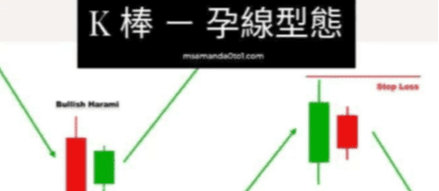
What is the serration pattern?
A Harami pattern consists of two candlesticks, with the first candlestick having a longer body; it can be either a bearish or bullish candlestick.
The body of the second candlestick is shorter than that of the first candlestick, and the highest and lowest prices of the second candlestick are both within the highest and lowest prices of the first candlestick.
Graphically, the second candlestick resembles a fetus nestled within the long candlestick, hence the name "Harami" or "Mother-Child Line." The Harami pattern is the opposite of the Engulfing pattern; the order of the two candlesticks is reversed. The colors of the Harami candlesticks can be opposite or the same; this is not important. The key is its position. Harami patterns can indicate potential growth or crisis. It represents a market entering a consolidation phase, with weakening volume, a pause in the trend, and uncertainty in market sentiment. The subsequent movement can either continue the trend or reverse it. The Harami pattern is a typical warning sign of a trend reversal. When using the Harami pattern, follow the strategy of trading in the direction of the breakout, placing a stop-loss order in the middle. This applies to both bullish and bearish markets.
The top is never invincible; when the bulls gain the upper hand, join their side; when the bears are strong, join their side. Characteristics of the Harami pattern.
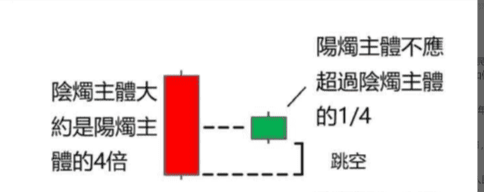
There must have been a fairly clear trend before this long body pattern.
The long entity is followed by the small entity, which is completely contained within the entity region of the long entity.
The long body of the first day reflects the market trend direction; a bearish candlestick indicates a downward trend, while a bullish candlestick indicates an upward trend. (The second candlestick's body is the opposite of the first.)
The smaller the candlestick body on the second day, the greater the reversal force of the entire pattern, and the greater its impact on short-term prices.
A doji candlestick pattern, where the second day's candlestick is a doji, indicates a stronger reversal signal when this pattern appears at market tops or bottoms. (Valid/Invalid example circles)
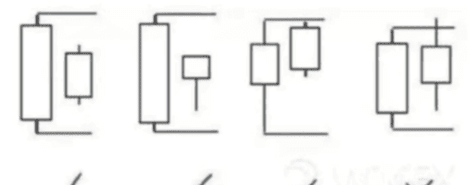
The image above is a demonstration of a valid and invalid linea nigra. Example
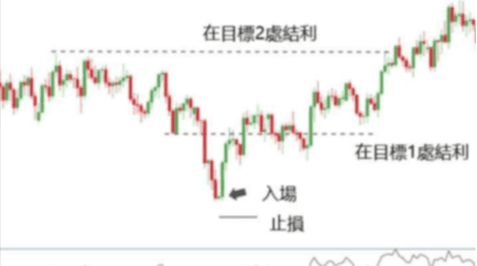
There is a clear downward trend.
A bullish hammer pattern appeared before the bullish inside bar, providing the first indication that the market might be about to reverse.
The length of the yang candle should not exceed 25% of the length of the previous candle.
A bullish candlestick opens and closes within the body of the preceding candlestick.
The RSI provides a signal that the market is oversold. This may mean that the downtrend is bottoming out, but traders should wait for the RSI to rise back above 30 for confirmation.
To identify a bearish engulfing pattern, the condition is that it is the opposite of a bullish engulfing pattern.

The best Harami pattern signal is a breakout in the direction of the existing trend; it is usually viewed as a continuation pattern. If the Harami signal appears at a key support or resistance level, it can be used as a signal of price stagnation. In a few cases, it can also be used as a reversal signal. The closing direction of the Harami pattern usually provides a good indication of the direction of the next breakout. Harami patterns with large bodies and no upper or lower shadows are particularly attractive.
More effective. The standard entry setup for a Harami pattern signal is to go long at the high of the Harami pattern, with a stop-loss placed at the low, targeting a bullish Doji Harami pattern.
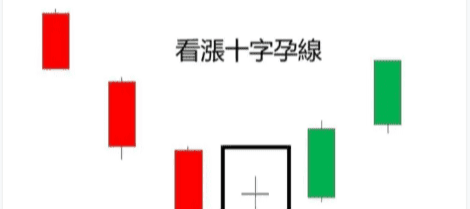
Traders often observe whether the second candlestick in this pattern is a doji, because a doji indicates market indecisiveness.
The color of the Doji candlestick (black, green, red) is not very important, as the Doji itself, appearing near the bottom of a downtrend, provides a bullish signal. A bullish Doji Harami pattern also offers an attractive risk-reward ratio, as once confirmed, the uptrend is just beginning. A bearish Harami pattern...

Compared to the engulfing line, the visual presentation of the harbinger line is much more complex, with many variations in shape.
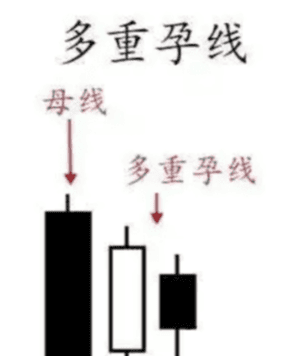
When two or more Harami patterns appear together, meaning each candlestick is completely covered by the previous one, this is a stronger pattern than a single Harami pattern because it accumulates strong breakout momentum after the price has completed a stable and continuous consolidation.
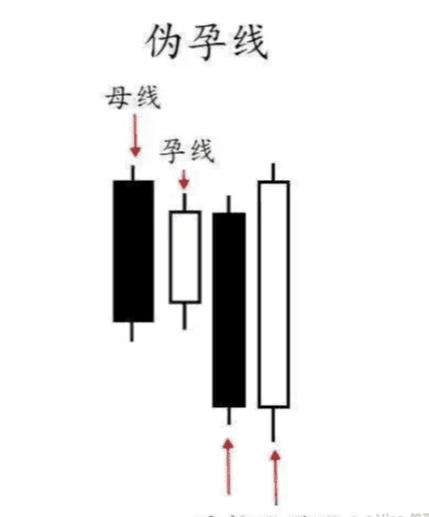
As shown in the figure, this is a combined pattern of a Harami pattern and an Engulfing pattern. Although the potential reversal of the Harami pattern was negated by the third, longer candlestick, a decisive reversal signal of a third candlestick engulfing the third candlestick eventually appeared, making the trend reversal more powerful this time.
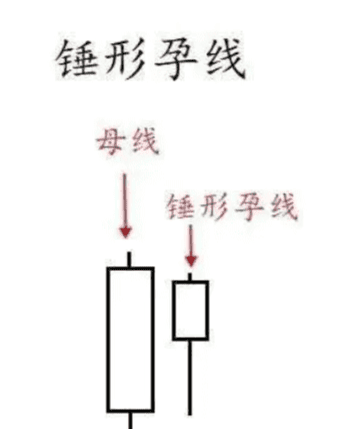
If the second candlestick is a doji or a hammer candlestick shorter than the first, it indicates a second attempt by the bulls, but they still failed to break through the previous high, resulting in a lower high for the candlestick body. Given that any form of breakout failure tends to lead to a reversal in the market...
The direction of the move is therefore a stronger reversal signal than the traditional Harami pattern. However, the Harami pattern should not be used as a basis for trading; the position of this pattern in a trend is crucial, and it must appear at the bottom of a downtrend.
You need to understand some supporting technical analysis or indicators, such as the popular Stochastic Oscillator and RSI.

A single image explains the differences between margin call, liquidation, and loss of capital!
Some people actually asked, "Who made the money from the contract liquidation?"
To put it simply: the funding rate for perpetual contracts goes entirely to the counterparty.
The losses incurred by the counterparty before the margin (principal) is liquidated are earned by the counterparty.
The platform receives any additional losses incurred during a margin call. During periods of sharp price spikes, the platform profits from these losses; however, during trending markets, the platform may lose even more, or the money may even go to the opposing party. However, platforms now have an ADL (Advance Debt Liability) mechanism, which will force liquidation to prevent significant losses.
All transaction fees go to the platform, and the platform shares a portion with the market maker (in a preferential form).
Exchanges do not actively act as counterparties; market makers are always market makers, not platform reserves.
The following is an extension of some basic popular science knowledge:
1. Funding Fee Rate
The underlying asset of perpetual contracts is the corresponding spot market. To keep the contract price close to the spot price, exchanges use funding rates to adjust the price.
Adjustments will be made. The payment rules for funding rates are as follows: If the funding rate is positive, users who go long need to pay users who go short; if...
If the value is negative, the user who shorted the stock will pay the user who went long, and the payment cycle is usually once every 8 hours.
The specific formula for calculating the payment amount is as follows:
Payment Amount = Transaction Amount (Purchase Principal × Leverage Ratio) × Funding Rate
2. Lever
Many beginners easily get wiped out when trading futures contracts, the most direct reason being leverage. Leverage amplifies both the potential gains and risks of trading, thereby stimulating...
Greed is inherent in human nature. Leverage in contracts can be set between 1 and 125 times. For example, with 100x leverage, this means the price will only...
A fluctuation of just one point can double your profits. Therefore, many people who lose money with low leverage are tempted to increase their leverage, ultimately...
This can lead to a margin call. Therefore, properly controlling leverage is key to avoiding a margin call.
3. Transaction Fees
Taking a certain exchange as an example, under the condition of no preferential treatment, the contract transaction fee collection rules are as follows:
The commission for taking orders (i.e., directly executing an already placed order) is 0.05%.
The commission rate for pending orders (i.e., orders placed in advance for execution) is 0.02%. Commissions are charged in both directions, whether buying or selling.
A handling fee will be charged for all transactions.
The specific calculation formula is as follows:
Transaction fee = Transaction amount (principal × leverage ratio) × Transaction fee rate

Having traded cryptocurrencies for over 10 years, from starting with 8,000 to achieving financial freedom and upward social mobility, here are twelve pieces of advice for newcomers to the crypto world!
First piece of advice
The cryptocurrency market has moved beyond its wild, unregulated growth phase and is entering a more formalized financial stage. Competition among capital institutions is becoming increasingly fierce; stop fantasizing about easy profits.
It's easy to create a cryptocurrency that promises a hundredfold return; in today's market sentiment, even a tenfold return is rare. Even in a bull market...
There will be very few cryptocurrencies that can bring huge price increases.
Second piece of advice
IPOs in the primary market may seem tempting, but they are actually extremely risky. Most projects will eventually go to zero, and those who encourage you to participate are often unscrupulous.
I'll tell you the truth. Even if a project is listed on an exchange, some so-called opinion leaders will advise you to hold it when they're selling, while they themselves...
They had already withdrawn.
The third piece of advice
While going all-in and using maximum leverage in contract trading are tempting, they also come with enormous risks. The essence of cryptocurrency trading lies in prudent operation.
The strategy involves accumulating profits through rolling over positions, rather than seeking exorbitant profits from a single trade.
The fourth piece of advice
When someone is frantically speculating on a particular cryptocurrency, it usually means that the cryptocurrency is nearing its peak. If you previously held that cryptocurrency, you might consider...
Act decisively when the time is right; if you don't already own the stock, never enter the market prematurely, lest you become the one left holding the bag.
Fifth piece of advice
Whether you are a college student or a young adult, your primary focus should be on your studies and personal development. Cryptocurrency trading should only be a supplementary means. Trading is a long-term endeavor.
It requires patience and perseverance. At the same time, having a stable source of income and excellent off-exchange earning ability will provide a solid foundation for your trading journey.
Strong guarantees.
The sixth piece of advice
Good fortune accompanies virtue, wealth requires patient accumulation, one should remain calm and rational when trading, and understand the principle that profit and loss are two sides of the same coin; regardless of profit or loss,
It is important to summarize experiences and reflect on one's trading decisions in a timely manner, as emotional traders often find it difficult to achieve long-term success.
The seventh piece of advice
Methods for making money are rarely shared easily. If someone touts the returns of a certain cryptocurrency to you, be wary to avoid becoming a victim of scams.
Eighth piece of advice
Be wary of those who flaunt their portfolio profits. They may only be profitable on a few individual positions, and their overall returns may not be ideal.
Focus on their actual trading skills and experience, rather than the surface-level profit figures.
Ninth piece of advice
Contract trading is extremely risky, and the vast majority of people will ultimately lose money. Human desires are limitless, but rational trading is the only way to succeed in the long run. One mistake...
Controlled transactions could wipe out all previous profits and principal.
The tenth piece of advice
Focus on bloggers who genuinely share their experiences and knowledge, rather than those who engage in brainwashing propaganda or flaunt their profits. Learn from their experiences.
Learn from experience and use it as a reference for your own trading decisions.
Eleventh piece of advice
Developing independent insights and judgment is crucial in trading. Don't blindly follow others' opinions; combine them with your own practical experience.
Making decisions based on market conditions and analysis, and figuring out trading strategies and methods that suit you are the keys to stable returns.
The twelfth piece of advice
Communicate with experienced cryptocurrency traders; even if they've been trading for years and are still losing money, you can learn from their experiences and understand the reasons behind their losses.
Therefore, avoiding repeating past mistakes will help you move forward more steadily on your trading journey.
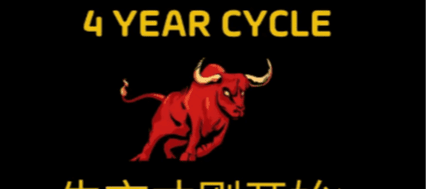
Finally, the instructor shared the core secrets to my success in achieving financial freedom and upward social mobility after more than 10 years of cryptocurrency trading: stop-loss and take-profit orders, and the art of money management.
I. The Art of Stop-Loss and Take-Profit
Preface: In financial trading, there is always the issue of entering and exiting the market. Entry should be based on the principle of "market momentum," while exit involves the issues of profit-taking and stop-loss. It is recommended that short- to medium-term traders consider using a semi-automatic trading model: manually buying and mechanically selling through automated trading software with profit-taking and stop-loss functions. Buying should be slow, requiring at least three reasons; exiting should be fast, closing the position immediately if the price breaks through a support or resistance level. Losses should be small, and profits should be large; how to balance these requires adjustment based on individual circumstances.
principle
Whether drawing lessons from practice or consulting the works of masters, everyone agrees that in investment transactions such as securities and futures trading...
In the process of trading, an important principle should be adhered to: hold onto profitable positions and let them run for profit, while avoiding losing positions.
It is crucial to cut losses promptly. The importance of this approach is self-evident.
Deterministic effect and reflection effect
The certainty effect is confirmed when most people are in a winning position; they tend to be cautious, risk-averse, and like to take profits while they can, fearing loss.
Existing profits. When people are in a profitable state, most are risk-averse.
In investing, the "certainty effect" manifests as a strong tendency for investors to take profits and sell positions that are currently generating returns.
The reflection effect is evident: when faced with a choice between two losses, a person's risk-taking instincts are triggered. Given a choice between a certain disadvantage (loss) and "taking a gamble," most people will choose to "take the risk."
The reality is that most people, when facing losses, are extremely unwilling to accept them and would rather take on greater risks to gamble. In other words, when faced with the expectation of loss, most people become willing to take risks.
Stop-loss is simpler than take-profit, but executing a stop-loss plan can be very painful. From a trading principle perspective...
The theory is that one should hold onto winning trades and cut losses on losing trades promptly, but in practice, the opposite is often true; once a trader's order is stopped out, they tend to hold onto winning trades and cut their losses.
Those who hold losing positions often harbor wishful thinking, hoping the market will reverse according to their wishes, rather than willing to liquidate their losing positions. I've seen this in practice.
Many investors share a common phenomenon: they close winning trades very quickly, but find it difficult to cut losses on losing trades.
The necessity of stop loss
Volatility and unpredictability are the most fundamental characteristics of markets; they are the basis for the existence of markets and the cause of risk in trading.
This is an immutable characteristic. There is never certainty in trading; all analysis and predictions are merely probabilities, based on...
Transactions based on such possibilities naturally involve uncertainty, and uncertain actions must be addressed with measures to control the expansion of their risks.
That's how stop-loss orders are created. Successful investors may have different trading styles, but stop-loss orders are what ensure their success.
The common characteristics. World-renowned investment guru George Soros said that investment itself is not risky; uncontrolled investment is risky. Learn to cut your losses, and act decisively.
Never fall in love with losses. Cutting losses is far more important than making profits, because preserving capital should always be the top priority; profit comes second.
Reasonable stop-loss principles are quite effective, and the core of prudent stop-loss principles is to prevent losses from continuing to expand.
Why is stop-loss so difficult?
Understanding the importance of stop-loss orders is crucial, but it's not the end goal. In fact, many investors set stop-loss orders but fail to execute them.
Losses are commonplace; in the market, the tragedy of being wiped out happens almost daily. Why is stop-loss so difficult? Based on the reflection effect...
See, it's the risk-taking spirit of traders at work, for three specific reasons:
Firstly, the mentality of wishful thinking plays a role. Even though traders know the trend has broken down, they hesitate too much and always want to wait and see.
Waiting too long caused me to miss the best opportunity to cut my losses;
Secondly, frequent price fluctuations can make traders hesitant, and repeated incorrect stop-loss orders can leave a lasting negative impression.
This could shake a trader's resolve to cut losses next time;
Third, implementing stop-loss is a painful and bloody process, a challenge and test of human weaknesses.
In reality, we can never be certain whether a trade is in a winning or losing position. Even when profitable, it's difficult to decide whether to exit immediately or hold and observe, let alone when in a losing position. Human nature's inherent drive for risk and greed makes every trader unwilling to earn less, and even more unwilling to incur greater losses.
Therefore, strictly adhering to profit-taking and stop-loss plans involves a sound trading mindset, which is a matter of self-discipline. Traders need to be disciplined in their trading...
This helps cultivate good self-discipline.
Methods of stop loss and take profit
1. Profit-taking methods
First
Take profits when the trend reverses. Traders all have a trading and money management plan, which should include entry prices and profit targets.
When trading with the trend, you should hold any profitable positions as long as the trend remains unchanged. When the market price reaches important support and resistance levels, pay close attention to market movements and use various methods to analyze whether the market is about to reverse.
Signs. If you believe the market has reversed, you should take profits.
second
When you choose the right time to enter the market and trade according to your trading plan, and it turns out you are trading with the trend, then you should hold your position firmly.
Manage your positions and let them move freely to generate profits as the market changes. Don't panic when corrections occur; continue holding your positions.
You have a position. However, there's one situation where you must close it: when the market price retraces to near the price at which you opened your position, and your position's profit...
When the profit is almost completely wiped out, you must take profits, close the position, and exit the market.
third
When you're trading with the trend and your positions are quite profitable, you become very worried that the market might correct or that the market price might reach a certain level.
When the price approaches a support or resistance level, you can also use a gradual profit-taking strategy to mitigate risk and maximize profits. For example, if you establish...
You closed your short position, and the market continued its downward trend, resulting in substantial profits for your holdings. This occurred when market prices fell to historically significant levels.
When the price reaches a resistance level, you can reduce your position by 1/3 or half, continue to hold the remaining position, and observe the trading situation near the resistance level.
If the price continues to decline after breaking through the resistance level, you should re-enter positions that have already been closed; if the market price reverses near the resistance level...
If there are signs of a downtrend, all positions should be closed and profits taken.
2. Stop-loss methods
First
The moving average (5-day, 10-day, etc.) stop-loss method: In his discussion of moving average trading strategies, Lao Xia mentioned the attractive effect of moving averages on prices. The 5-day and 10-day moving averages...
Moving averages act as both support and resistance levels for prices. When the price breaks below the support level or above the resistance level, traders should hold...
All long or short positions should be closed out with a stop-loss order.
second
The highest price pullback (3%, 5%, etc.) stop-loss method is used when a long position falls by 3% or 5% from its recent high.
Choose to stop loss and exit the market.
third
Breakout stop-loss method (important support/resistance, trend line, neckline, etc.): When the price breaks below the support level, upward trend line, neckline, etc.
Jinli's long positions should be closed immediately to avoid further losses; conversely, when the market breaks through resistance levels, downtrend lines, necklines, etc.
If a short position is established at that time, it should be closed immediately.
fourth
The resistance line stop-loss method is used when the market trend fails to break through important resistance levels, the top of a trading range, areas of high trading volume, the upper trendline, or the neckline, and then turns downwards.
When the market moves downwards, all long positions should be closed out with a stop-loss order; conversely, when the market moves downwards, long positions should be closed out with a stop-loss order at important support levels, the bottom of the trading range, or other key support levels.
fifth
When encountering bearish patterns such as double tops, triple tops, head and shoulders patterns, or dark cloud cover patterns, stop-loss orders should be placed promptly to cut losses on long positions.
Conversely, when encountering bullish patterns such as double bottoms or triple bottoms below, short positions should be stopped out promptly.
II. The Art of Financial Management
The most troublesome thing in trading is risk control, such as setting profit targets and stop-loss orders, controlling position size, and managing one's mindset.
Here, we'll focus on position control and how to rationally manage capital allocation to maximize profits.
1. Pyramid-shaped money management method:
Concept: The initial investment is relatively large. If the market moves in the opposite direction, no further investment will be made. If the market moves in the same direction, more investment will be made gradually.
The position is gradually increased, with each additional purchase decreasing in size. Position control exhibits a pattern of larger increases at the bottom and smaller increases at the top.
Advantages: Position sizing is based on return rate; the higher the win rate, the larger the position size. Position size is increased by leveraging the continuation of trends.
In a trend, you can obtain higher returns with lower risk.
Disadvantages: It's difficult to profit in a volatile market. The initial position is relatively large, requiring a high level of skill for the first entry.
This position management method is only applicable during periods of high volatility and weak market conditions, where it is difficult to achieve good returns. It also has specific requirements for initial entry.
Unlike the previous two methods, this method carries a higher risk, but if successful, the return will not be low.
2. Simple investment and capital control:
A simple investment strategy typically involves a 20/20 allocation, meaning that funds are always invested at half the capital level, ensuring a balance of capital regardless of market conditions.
Maintain necessary and maximum vigilance, always adhere to a half-position strategy, and strive to be invincible in the face of market risks.
The company always maintains its proactive right to use funds, and if it needs to add to its position in the event of an investment loss, then...
The investment behavior of the reserved funds is also a 20/20 allocation, rather than a one-time averaging down. A 20/20 allocation is the basic model of a simple investment method.
While it offers a degree of security and reliability, the drawback of the binary system is that it can somewhat diminish the incentive for investment decisions.
3. Control of composite investment funds:
The investment approach of the composite investment model is quite complex, and strictly speaking, it has multiple levels, but the main ones are the three-part system and the six-part system.
The three-part system divides funds into three equal parts, and the position building process is always completed in three stages, with each stage followed by a separate entry. For large funds, position building...
The behavior is based on the identified area, therefore the act of establishing a position is a cyclical behavior.
The three-part system for building a position generally also reserves one-third of the risk capital. Compared with the two-part system, the three-part system is more aggressive. After two-thirds of the funds have been invested and a certain profit has been made, the remaining one-third of the funds can be used for a more aggressive investment approach.
The three-part investment model is not complicated and is more scientific than the two-part system. It is more proactive in its investment approach, but this proactive position building must be based on the premise that the main investment capital has achieved a certain profit. The disadvantage of the three-part system is the risk...
Risk control is less effective than risk control under a binary system.
The six-part system is formed by combining the basic characteristics of the two-part and three-part systems, and actively leveraging the advantages of both models. The six-part system's position building...
The specific allocation of funds for this activity is as follows:
The six-part system divides the total investment into six equal parts, and these six parts are further divided into three tiers.
A. The first tier consists of 1 unit, which accounts for 1/6 of the total funds.
B. The second tier comprises 2 units, which is 1/3 of the total funds.
C. The third stage consists of 3 units, which accounts for 1/2 of the total funds.
The six-tiered position-building strategy is relatively flexible, effectively combining funds across three tiers (A, B, and C), and can be adjusted according to different market conditions.
Use the following six combinations: (A, B, C), (A, C, B), (B, A, C), (B, C, A), (C, A, B), (C, B, A).
Funds, but in the process of use, no matter what combination they are in, the last group is risk capital. At the same time, no matter what level, the intervention of funds must be progressively increased in units.
While using funds at three tiers (A, B, and C), you can also use a two-part allocation for tier B funds and a three-part allocation for tier C funds, making it more comprehensive. The six-part allocation is a relatively flexible, safe, and reliable investment model, combining investment behavior with...
It combines the advantages of the two methods mentioned above, but its disadvantage is that the procedure is somewhat complex during use.
4. Control of combined investment funds
The portfolio investment model differs slightly from the perspectives discussed earlier. Strictly speaking, it's not based on the amount of capital, but rather on the investment cycle. It primarily divides capital into three investment models: long-term, medium-term, and short-term. Generally, the total capital is divided into four equal parts: long-term, medium-term, short-term funds, and risk control funds.
As we can see from the above, the different allocation of funds and position building models should be multi-faceted. Therefore, position building behavior is based on the accurate judgment of the executor. Scientific fund management behavior can better control the decision-maker's decision risk. Thus, the decision-making of the decision-making level and scientific position building behavior are inseparable.
In fact, whether it's stop-loss and take-profit orders or capital management, they are all inseparable from risk control strategies. Every investor hears the phrase "The market is risky, invest with caution" before entering the market. Knowing this is one thing, but when it comes to the specifics, most investors...
Subconsciously overlooked. Investors must always remember that trading requires extreme caution; without a prudent attitude, no amount of wisdom will be of any use.
In the crypto world, it all boils down to a battle between retail investors and market makers. If you lack cutting-edge information and firsthand data, you'll only get fleeced! If you're interested in strategic planning and profiting from market manipulation together, contact Ming Ge. We welcome like-minded crypto enthusiasts to discuss this together!
A good mindset is crucial when trading cryptocurrencies. Don't let your blood pressure spike during a sharp drop, and don't get carried away during a surge. Taking profits and securing them is paramount. #币安Launchpool上线KITE